Visit Library for MBP Pro eBooks |
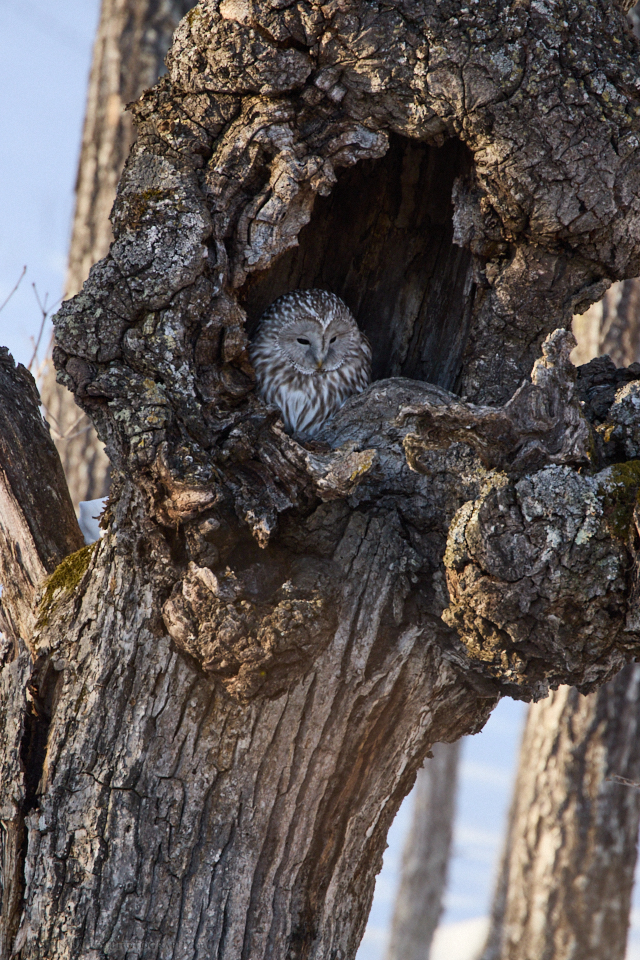
We pick up the trail today on the afternoon of our first day in Hokkaido when we took a break from shooting the beautiful and elegant Red-Crowned Cranes and went to photograph a Ural Owl on its nest. This nest is quite far from the path from which we photograph it, in an attempt to prevent people from disturbing the owl too much. We have heard reports of people throwing things at owl’s nests to wake them up, which I find mind-boggling, but some people have little to no respect for the wildlife they care about enough to photograph. I think the long and short of it is that some people are simply collecting trophies, and probably not a far cry from the hunters that would have killed an animal in Africa and hung its head over their fireplace.
As a result of the distance, I photographed this owl with a focal length of 1000 mm, a combination of my 100-500mm lens at its full extent, and my RF 2.0X Extender. The limitation of the Canon RF Extenders that prevents you from zooming out proved much more troublesome on this trip than in Namibia last summer. The wildlife in Namibia was always a reasonable distance away, so there wasn’t much need to zoom out, but when photographing the cranes and swans in Hokkaido, I tried to zoom out past the limited focal length many times. I hope that Canon comes up with a better solution before too long.
After photographing the owl, we went to a location where we would photograph the cranes flying away with a slow shutter speed for a panning shot. I generally use a 1/50 of a second, which results in the look of the second image for today, but this is a panning shot with a twist. The cranes flew away through a gap in the trees, and I kept firing as this one became obscured by the foreground tree. Although I was initially disappointed that I’d continued to shoot, I realized that I liked the results. It almost looks to me like the crane is just starting to reach warp speed, as the Starship Enterprise does in Star Trek.
I see from my settings that I was down to 1/30 of a second for this particular shot, with my ISO set to 100 and an aperture of ƒ/13, so you can tell the light was starting to die a little at the end of our day. I don’t call out my settings for every photograph, but note that if you click on any of the images here on the blog, the light box that images are opened up in displays the EXIF data below the image when available so that you can check for yourself when interested in this information.
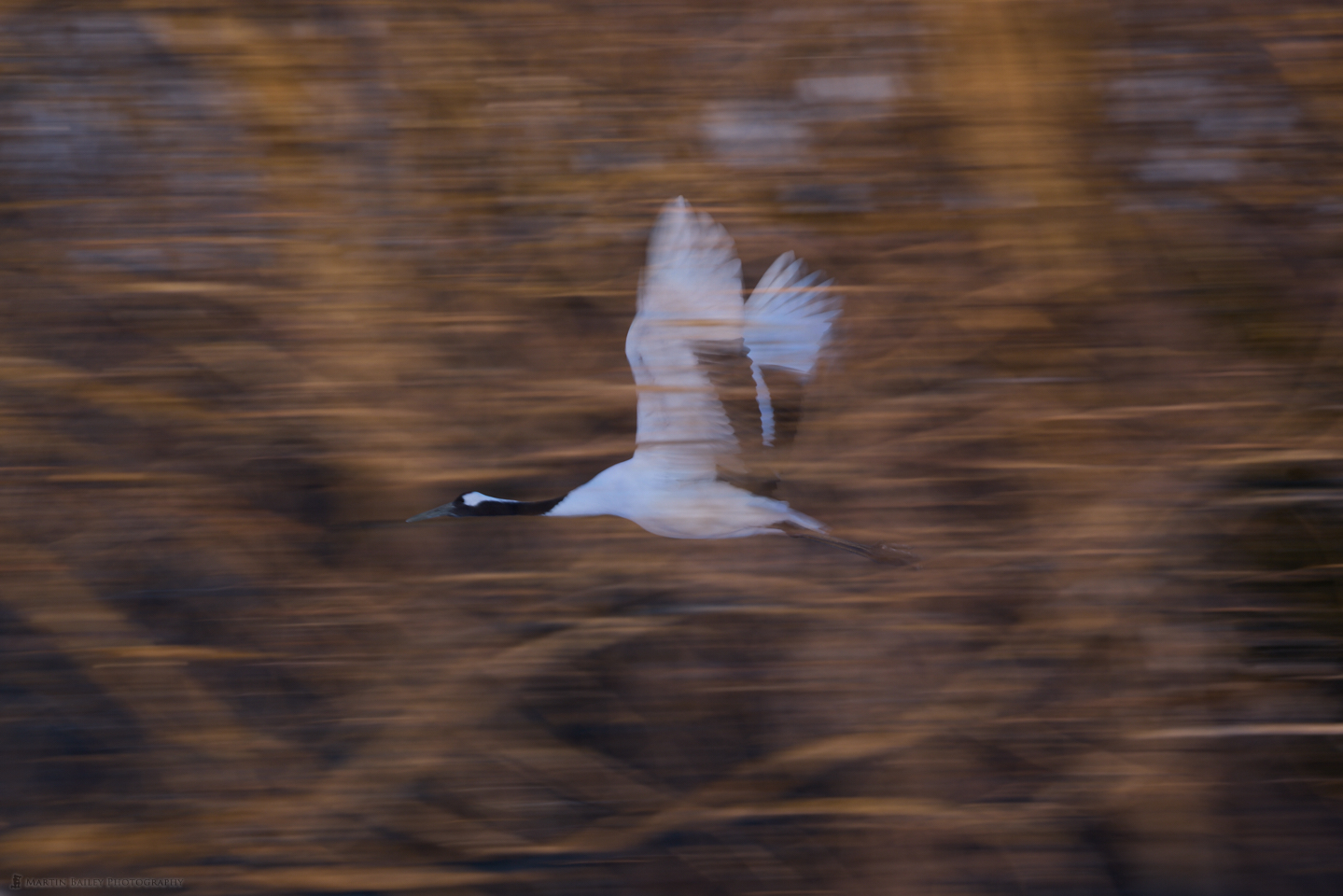
The following morning, we headed out to Otowabashi, or the Otowa Bridge, where Otowa means the sound of wings, which I love, and we were treated to some lovely hoar frost on the trees and mist on the river. Just like the snow monkeys, the number of photographers on the bridge is back to lunatic proportions, but we don’t try to compete with the 4 am crowd, as it results in forcing our bus driver to drive illegally long days, and we stay within the boundaries of the law on my tours. We leave early enough to form a second row and shoot between the shoulders of the folks that get there before us.
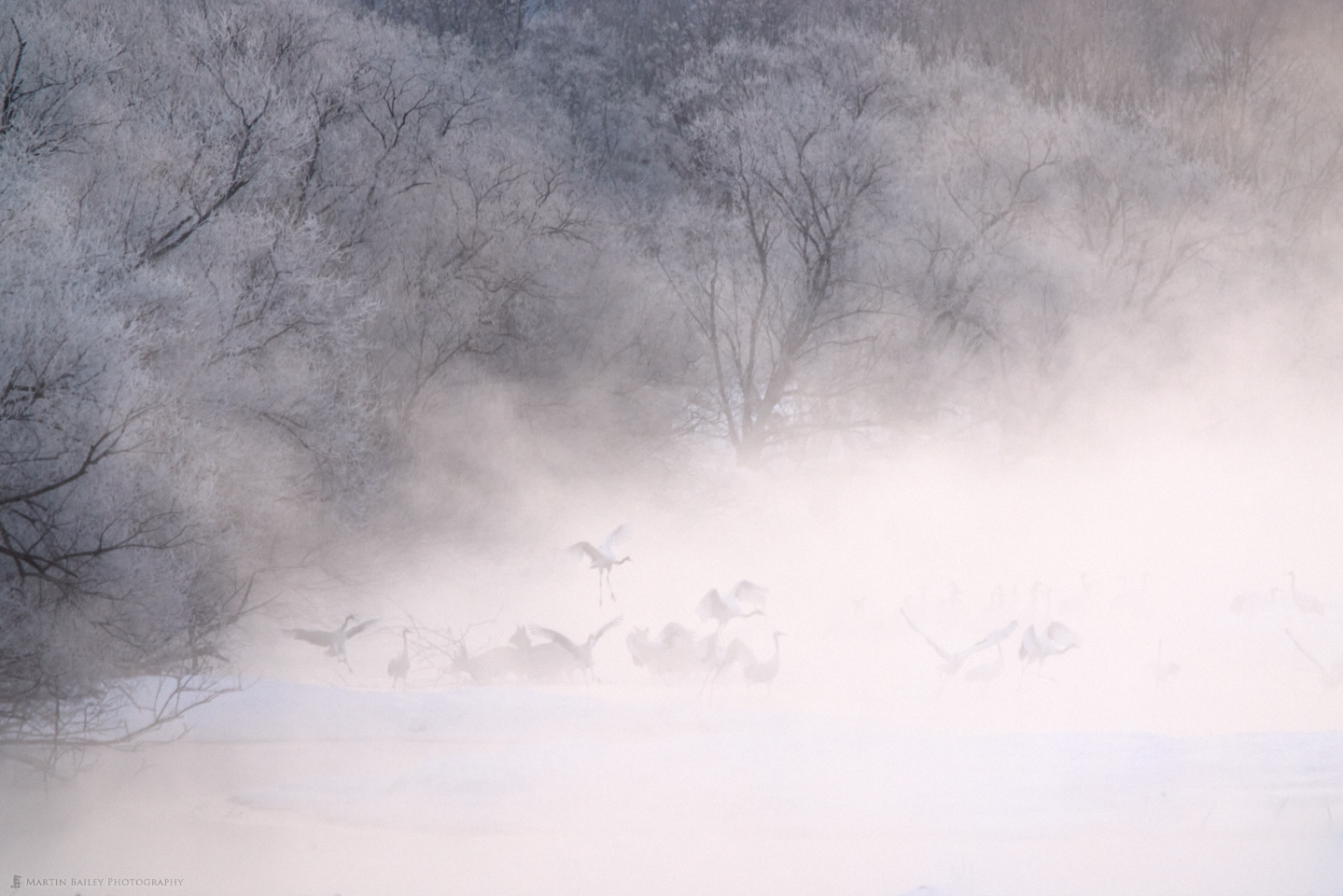
The cranes are gradually moving further down the river too, so I shot this image at 1000mm, once again, with my 100-500mm lens and 2.0X Extender. The mist was almost too thick, but I love the look, almost like an ink painting, and if you look into the crowd of cranes, you will perhaps be able to make out the silhouette of two deer that walked through the cranes as they tried to warm up and start their day, which caused the cranes and ducks to fly.
In this next image, you’ll see that I captured the aftermath of the deers’ little stroll resulting in what I think is a pretty beautiful scene. The deer are still faintly visible in the mist, probably wondering if they smell, as all the birds took flight.
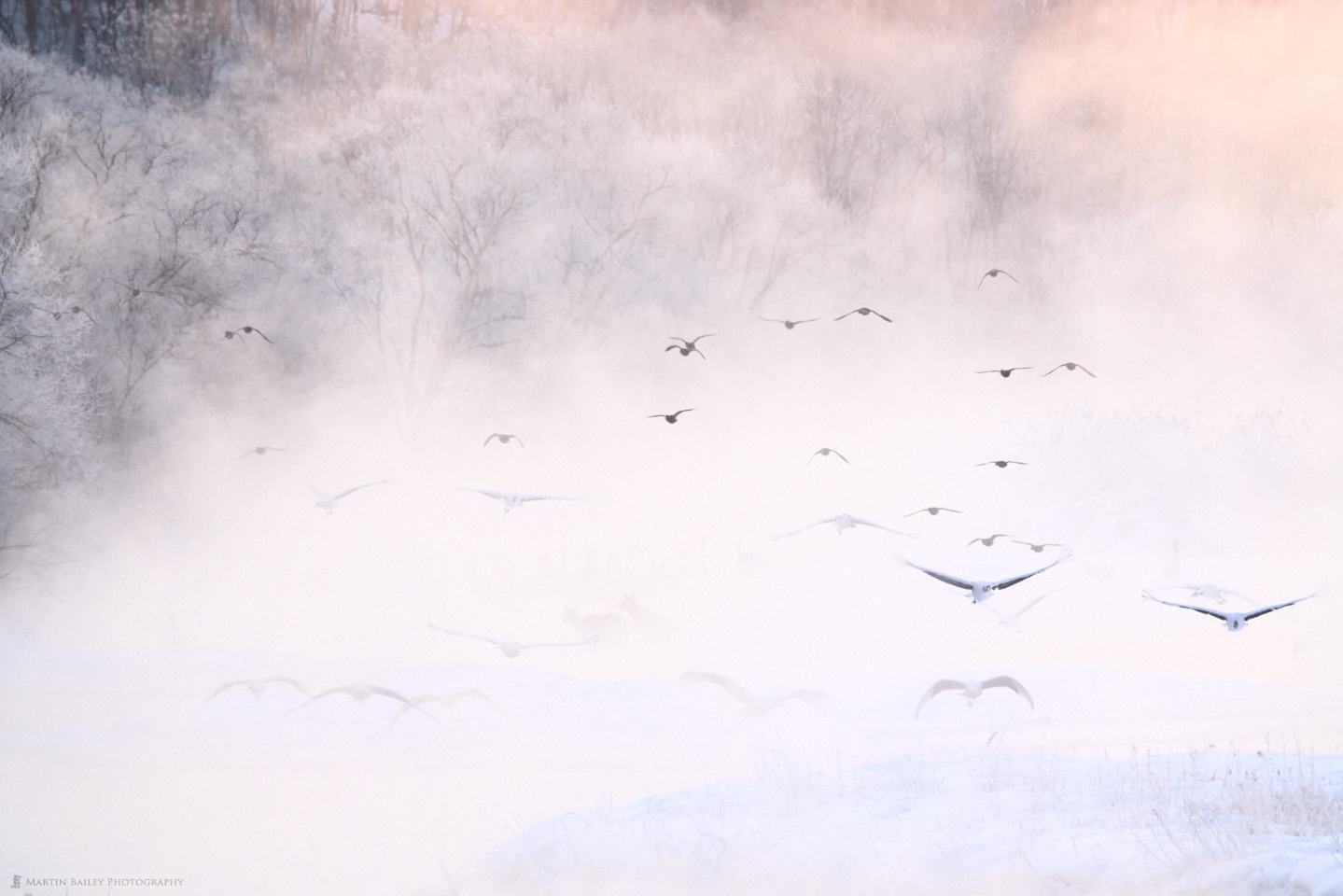
Because the weight distribution of the 100-500mm lens changes as you zoom, I found it very difficult to use on my old Really Right Stuff gimbal head, so I would routinely take the camera off the tripod whenever any action started. After the previous frame, I reached for the quick release and shot the next image hand-held as the cranes quite humorously left the area in pairs, almost as though they’d been talked down the runway by traffic controllers.
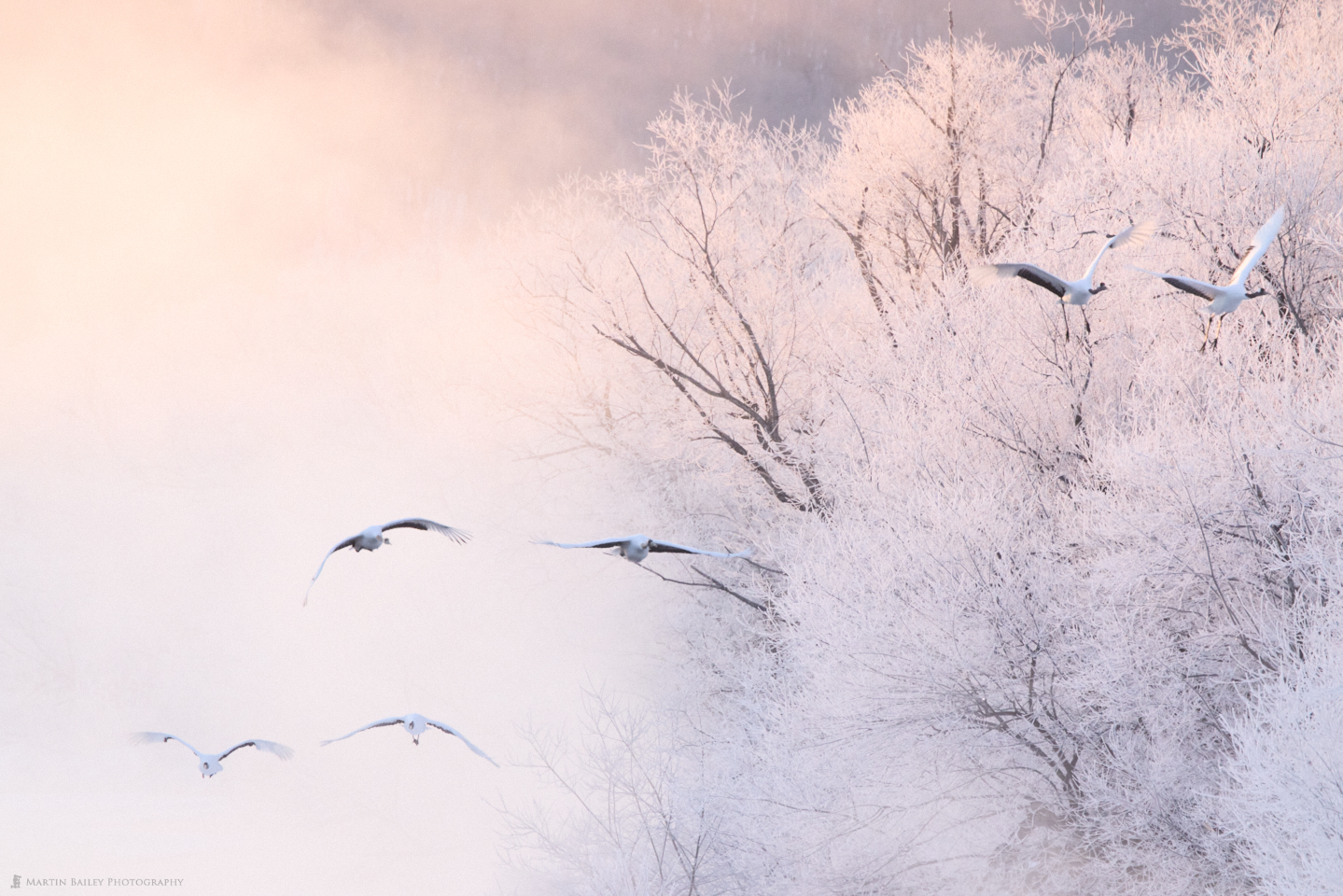
Later that day, we went back to the crane center, and I was happy to be able to capture this image of two cranes calling together, with their breath showing, due to the light coming from the sun just above the trees directly behind the cranes. It was slightly hazy when I shot this, so the light and shadows of the birds’ necks on their bodies were not as harsh as the two images of single cranes that I shared at the end of the previous episode, part one of this series.
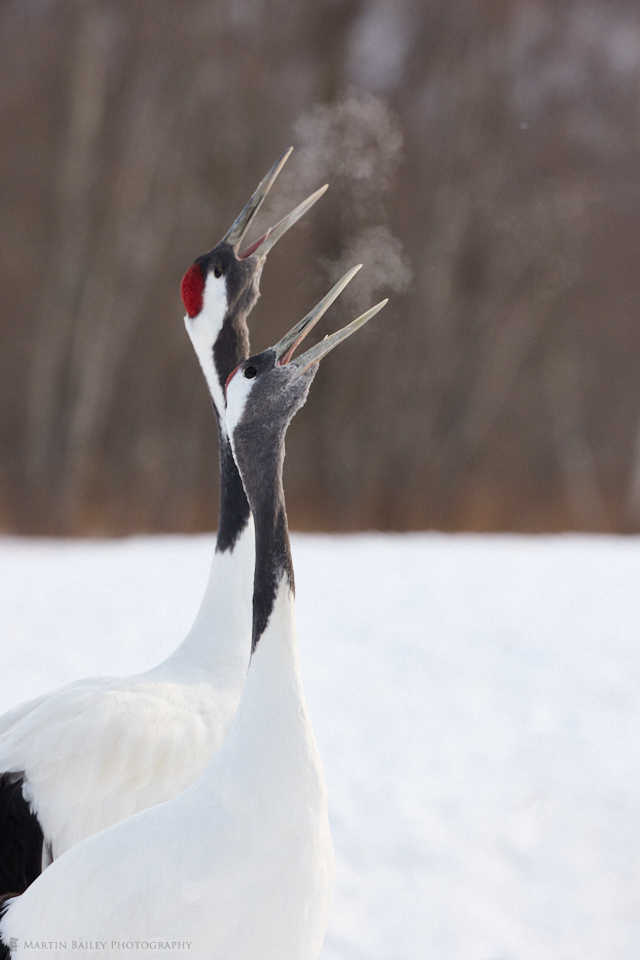

A little further along from where I shot the previous image, there is a slightly raised area, that enables us to look down on the cranes that fly out of the reserve just above the snow, and that provides an opportunity to get shots that are predominantly white-on-white, and I love this type of image. I like it when you have to work to see and understand the contents of an image, and when the outline of the birds is difficult to see, the image falls into this category.
The following day, we moved on to start our two days close to Lake Kussharo. We were here mainly to photograph the Whooper Swans, but in recent years I’ve become somewhat obsessed with trying to photograph the incredibly cute Long Tailed Tits that we see in this area. I didn’t get a shot that I was happy to share, but while looking out for small birds, I did get this shot of a Japanese Pygmy Woodpecker, which I thought was quite cute.
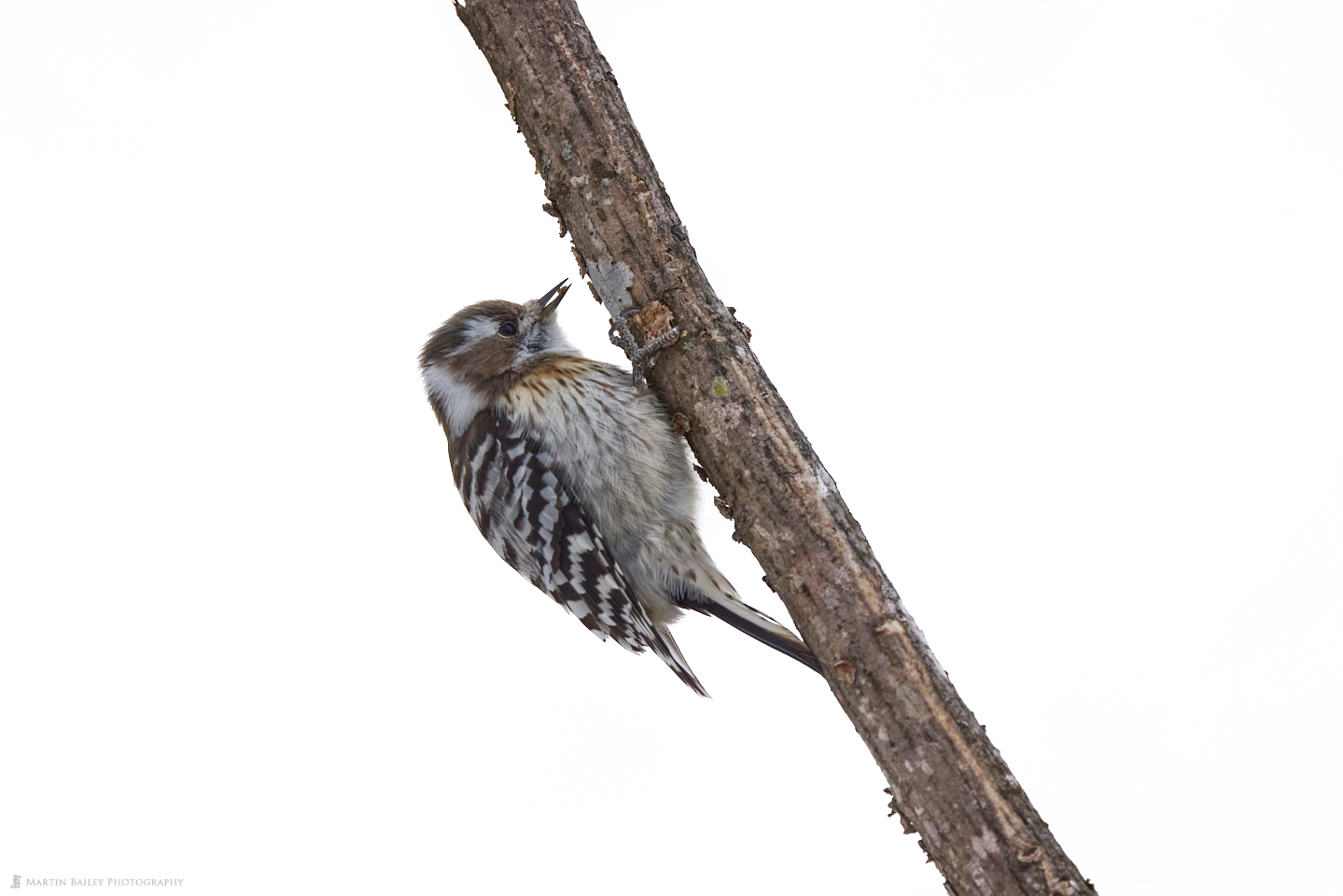
For such small birds that move around very quickly, I had set my shutter speed to 1/3200 of a second, and my ISO also needed to be at 3200 with an aperture of ƒ/8 to reach the optimal exposure. Note, too, that I increased the whiteness of the background in this shot on my computer to make it pure white. The light gray in the original image looked a little disturbing, with traces of other branches in the bokeh, so I figured white would probably work better.
Just as we’d been lucky to get some snow shortly before visiting the snow monkeys, Lake Kussharo only froze a few days before we arrived, and then a warm day caused the ice to break up, and then it froze again, causing the fissures that you can see in the background of this image. I don’t dislike them, especially with the evening sun reflecting in the water like this.

After the swans comes our three days photographing the Sea Eagles from the small fishing town of Rausu. Although all locations provide spectacular winter wildlife photography opportunities, the Sea Eagles are in some ways the highlight of the trip. As I mentioned in the previous episode, we often have to increase the ISO to reach our optimal exposure, but exposing to the right, so that the data on the histogram is just short of the right shoulder, ensures that you won’t see grain in your image. I shot this at ISO 3200, with a shutter speed of 1/1000 of a second at ƒ/10. I like that the reflection of the Steller’s Sea Eagle that’s captured so strongly in the water beneath the bird.
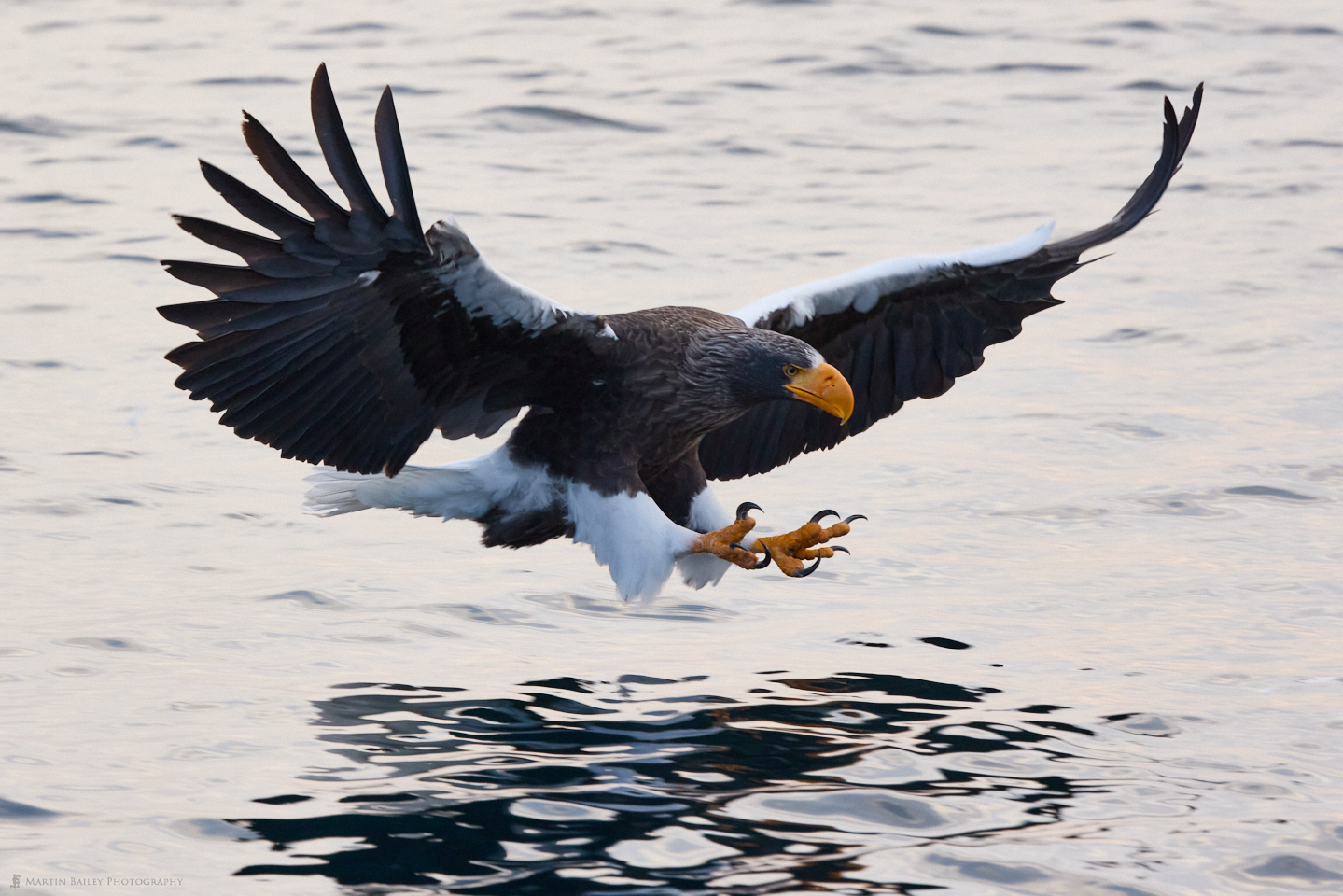
I enjoyed the faster frame rate of the EOS R5, and the autofocus is also amazing. The sea eagles were going to be my final test of the R5 for wildlife, because photographing these birds swooping down and catching fish from the sea is one of the most difficult subjects I shoot, but as you can see, and will see for most of the images I’ll share in part three of this series, the R5 did a great job.
We’ll wrap it up there for today though, and I’m going to be in Hokkaido for the third and final Japan winter tour of this season when I release this. I will release part three at the start of March, before going on to walk you through our experiences in the final tour. If you are interested in joining one of these tours in 2024 or a future year, you can check availability and tour details, and book your place, all linked from our tours page.
Show Notes
Visit our Tours and Workshops page for details of future tours: https://mbp.ac/tours
Subscribe in iTunes to get Podcasts delivered automatically to your computer.
Download this Podcast as an MP3 with Chapters.
Visit this page for help on how to view the images in MP3 files.


0 Comments